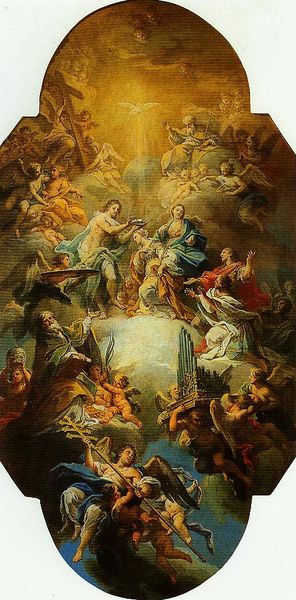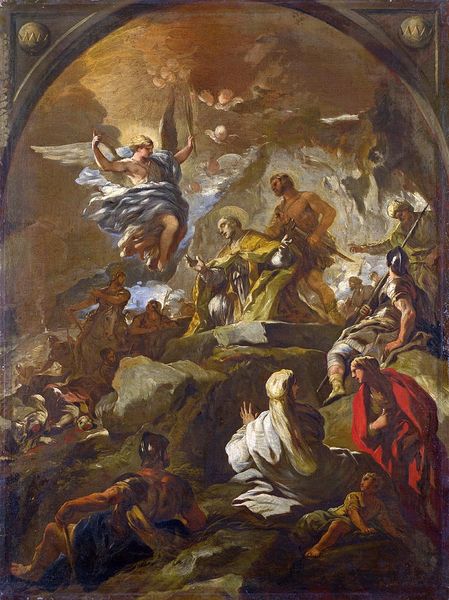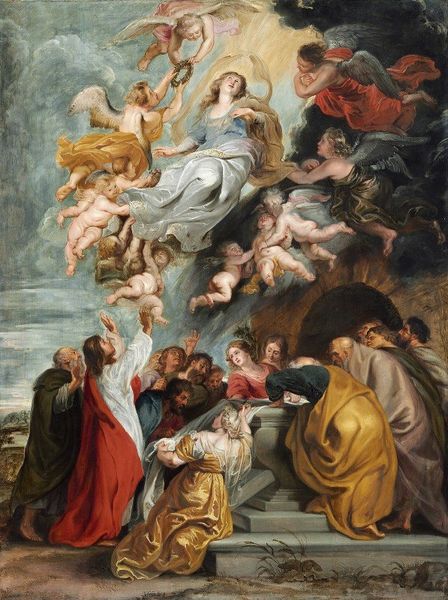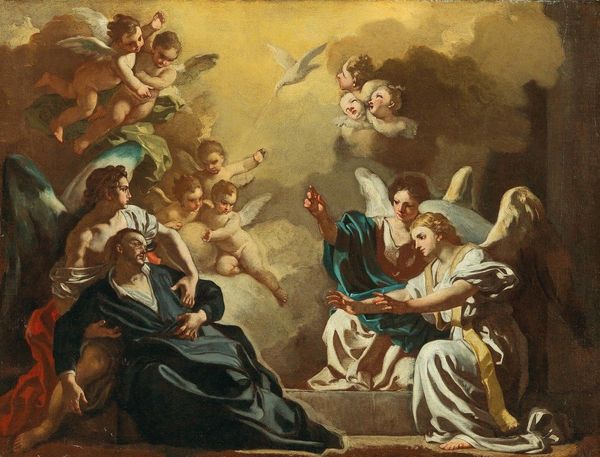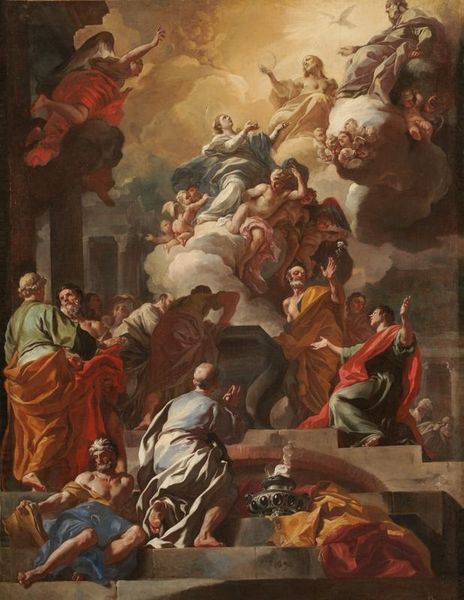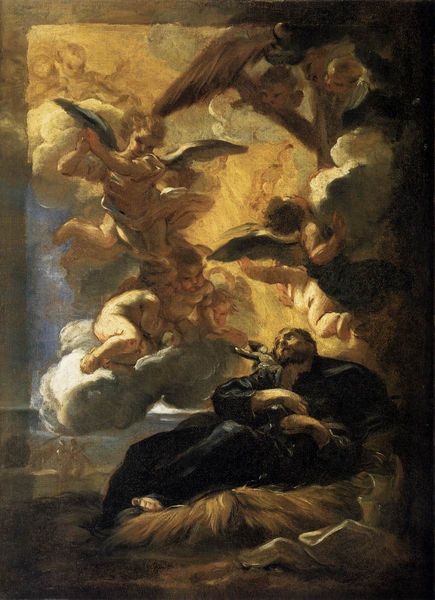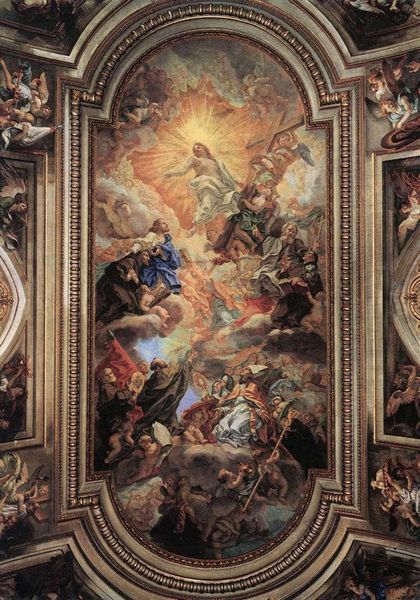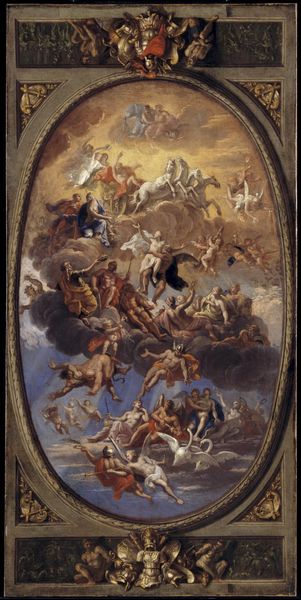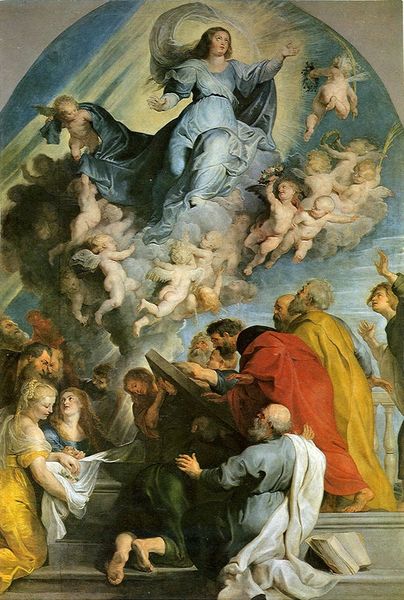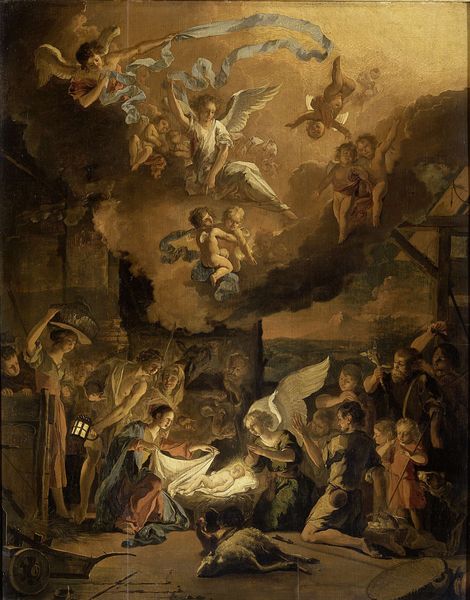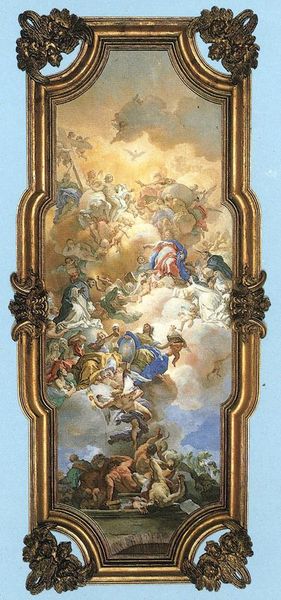
tempera, painting, oil-paint
#
allegory
#
baroque
#
tempera
#
painting
#
oil-paint
#
figuration
#
oil painting
#
history-painting
Copyright: Public domain
Francisco Bayeu y Subias created this painting of the Assumption of the Virgin, likely in Spain, during the late 18th century. It depicts the Virgin Mary being taken up to heaven, surrounded by angels, God, and the Holy Spirit. The image creates meaning through established visual codes. The Virgin Mary, a central figure in Catholicism, is portrayed in a way meant to inspire reverence. The upward movement and light symbolize her ascension to heaven. Bayeu was a court painter and his religious works reinforced the power of the Spanish monarchy, which was closely allied with the Catholic Church. The painting reflects the conservative values of the Spanish court and aristocracy, which sought to maintain the existing social order. Religious institutions like the church played a central role in upholding social norms, and art was often used to reinforce these. To understand it fully, we need to research the religious and political context of 18th-century Spain. The meaning of art is always contingent on its social and institutional context.
Comments
No comments
Be the first to comment and join the conversation on the ultimate creative platform.
